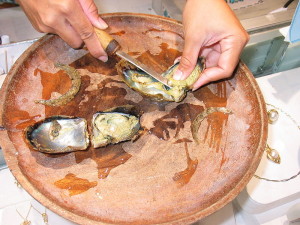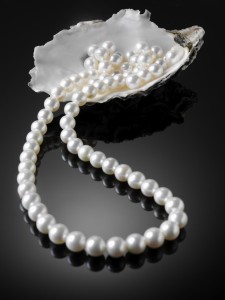Not that they have anything else in common other than sharing the letter “o” in their name, but I have always found them interesting for various reasons.
When I was a child I had a hard time imagining a bird that didn’t fly. I also had a hard time imagining a bird the size of an ostrich. Then I heard about it’s cousin the emu. Both birds are huge, flightless, and can run at maximum speeds over 40 mph. The ostrich is the largest living species of bird and lays the largest egg of any living bird (extinct elephant birds of Madagascar and the giant moa of New Zealand did lay larger eggs).
Ostriches primarily eat plant matter and live in nomadic groups that can contain up to fifty birds. When threatened, the ostrich will either hide by lying flat against the ground, or will run away. If cornered, it can attack with a kick from its powerful legs.
Ostriches and emus are raised for their feathers, hides, and for meat. Here in East Texas, in fact here on my little ranch, people raised emus as livestock about 20 years ago. When I tell folks in town where I live, they often say, “Oh, yeah, where the emu farm was.”
 |
| Getting a pearl out of an oyster |
I’m not sure what the fascination was with oysters when I was a child. Maybe because I thought it would be cool to find an oyster with a pearl inside. If I could somehow get myself to Hawaii, or Japan or some other area where oysters were harvested, I could join the divers who hunted for pearls.
I had an adventurous spirit and vivid imagination as a child, and I practiced holding my breath under water, knowing divers held their breath for a long time. When I made it to three minutes, I thought I was ready. Unfortunately, I had no way of getting from Michigan to Japan.
The largest pearl-bearing oyster is the marine Pinctada maxima, which is roughly the size of a dinner plate. Not all individual oysters produce pearls naturally. In fact, in a harvest of three tons of oysters, only three to four oysters produce perfect pearls. This has led to more pearl farms, where farmers culture a pearl by placing a nucleus, usually a piece of polished mussel shell, inside the oyster. In three to six years, the oyster can produce a perfect pearl. These pearls are not as valuable as natural pearls, but look exactly the same. In fact, since the beginning of the 20th century, when several researchers discovered how to produce artificial pearls, the cultured pearl market has far outgrown the natural pearl market.
I have a strand of cultured pearls that once belonged to my mother-in-law. Despite my childhood fascination with pearls, I am not the pearl-wearing type, but I treasure this single strand that was a gift from a special lady.
The pearls in this picture are not mine, but this is what mine look like. I also have a half of an oyster shell like this that I use to hold rings.
The first two pictures are courtesy of Wikipedia, which is where I also snagged the facts. This last picture I purchased from iStock for a possible book cover.



I’ve eaten both but Ostrich is far tastier although to be fair deep fried oysters in batter was quite nice.
In Scotland they farm Ostriches for meat, something which surprised me when I first heard of it.
When I first heard that ostriches were raised for meat, I was surprised, too. I’ll admit that I have not eaten either oysters or ostriches.
A lovely post and informative too! Thanks and good luck for the rest of the challenge.
This comment has been removed by a blog administrator.
Thanks for coming by, Grover. Nice to meet you, and I’m glad you liked the post. It is fun to visit the blogs in the A to Z Challenge and learn some things we did not know.
Was always fascinated by Ostriches after I saw them in the movie Hatari when I was a kid.